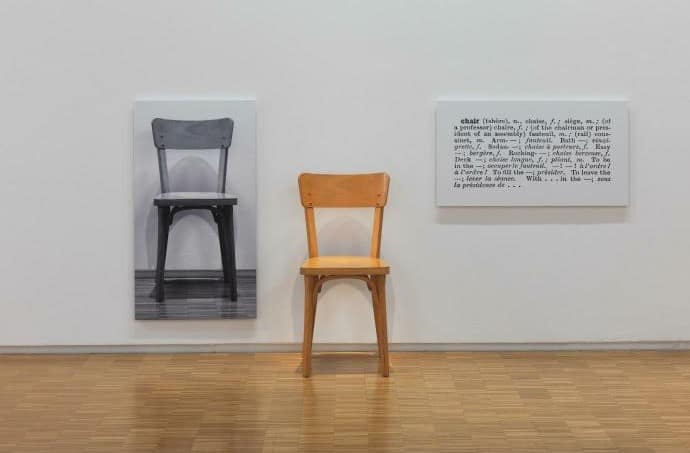CONCEPTUAL ART (1960–1970)
 Joseph Kosuth, One and Three Chairs (Une et trois chaises), 1965. Courtesy of Centre Pompidou
Joseph Kosuth, One and Three Chairs (Une et trois chaises), 1965. Courtesy of Centre Pompidou
Conceptual Art (1960s–1970s)
Conceptual art completely rejected previous art movements, and artists prized ideas over visual components, creating art in the from of performances, ephemera, and other forms. Polish performance artist Ewa Partum’s Active Poetry consisted of her scattering single alphabet letters across various landscapes. American artist Joseph Kosuth explored the production and role of language within art, as seen in his 1965, One and Three Chairs. In it, he represents one chair in three different ways to represent different meanings of the same object. Because this type of art focused on ideas and concepts, there was no distinct style or form.
Conceptual art emerged as an art movement in the 1960s, critiquing the previously ruling modernist movement and its focus on the aesthetic. The term is usually used to refer to art from the mid-1960s to the mid-1970s. In Conceptualism, the idea or concept behind the work of art became more important than the actual technical skill or aesthetic. Conceptual artists used whichever materials and forms were most appropriate to get their ideas across. This resulted in vastly different types of artworks that could look like almost anything – from performance to writing to everyday objects. The artists explored the possibilities of art-as-idea and art-as-knowledge, using linguistic, mathematical, and process-oriented dimensions of thought as well as invisible systems, structures and processes for their art.
